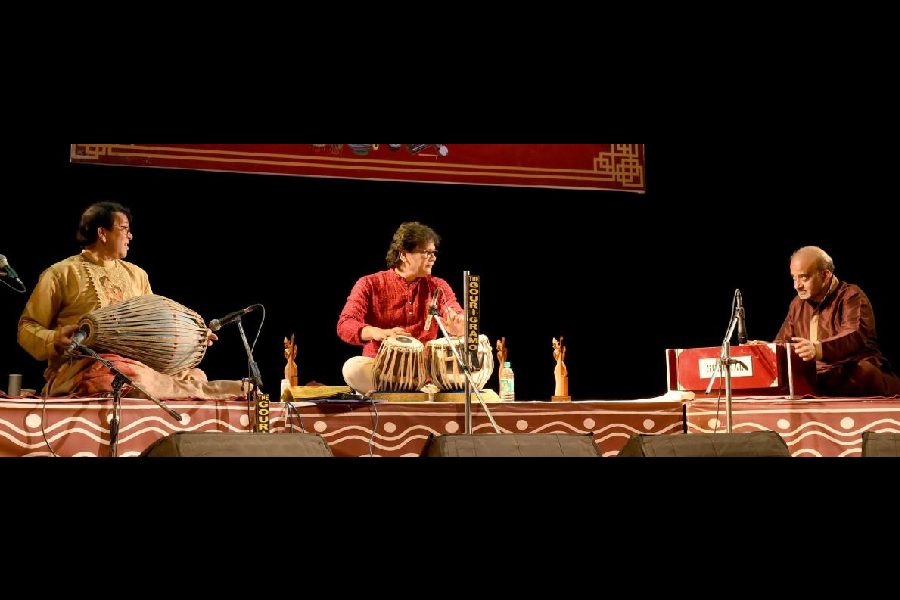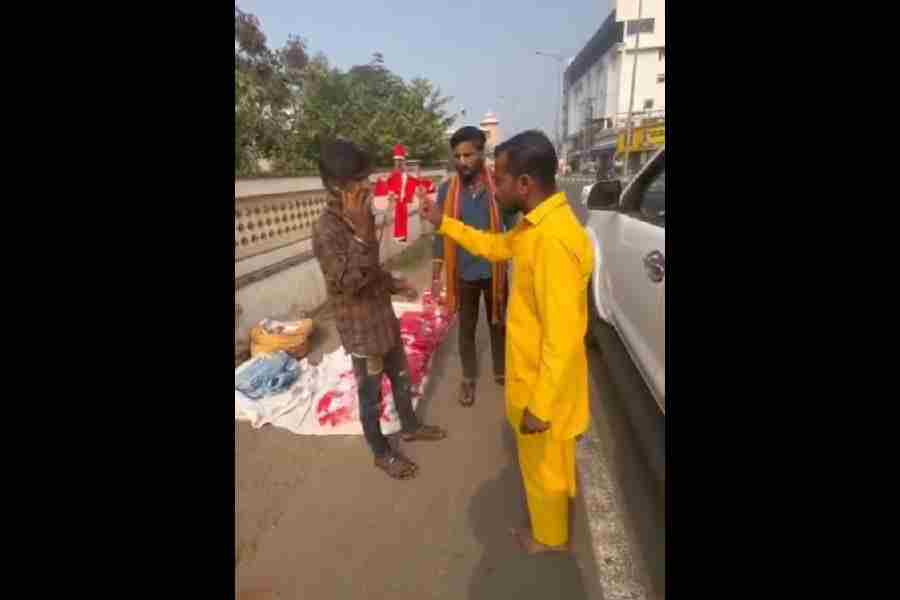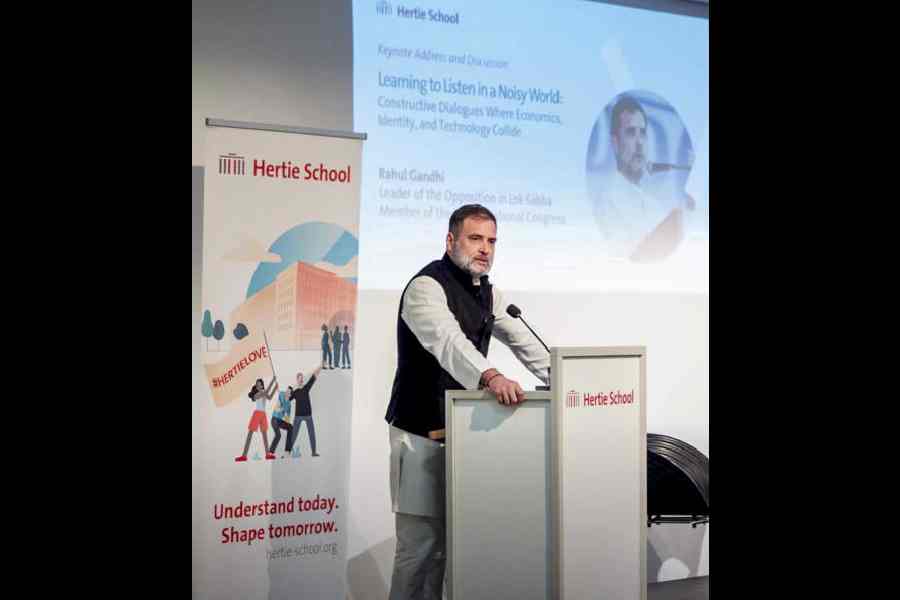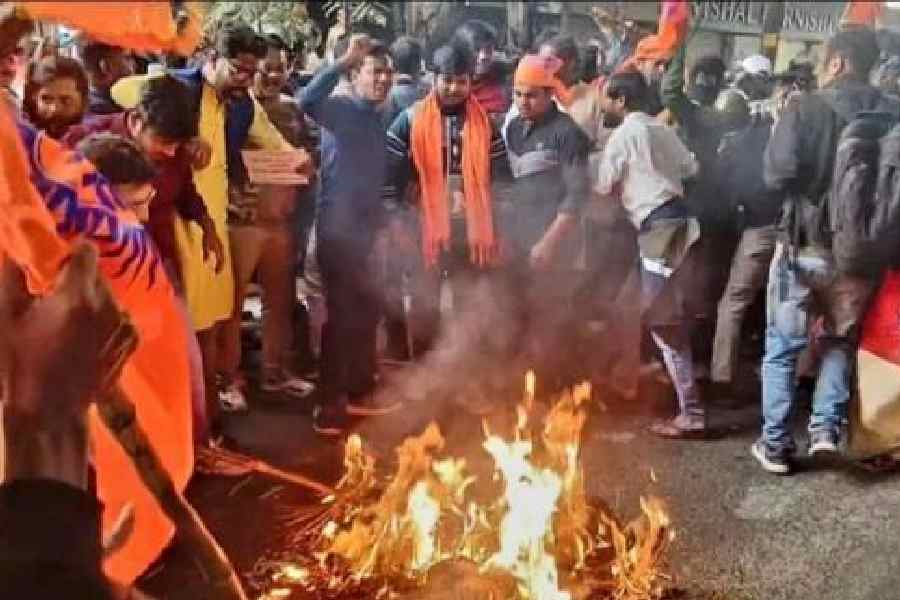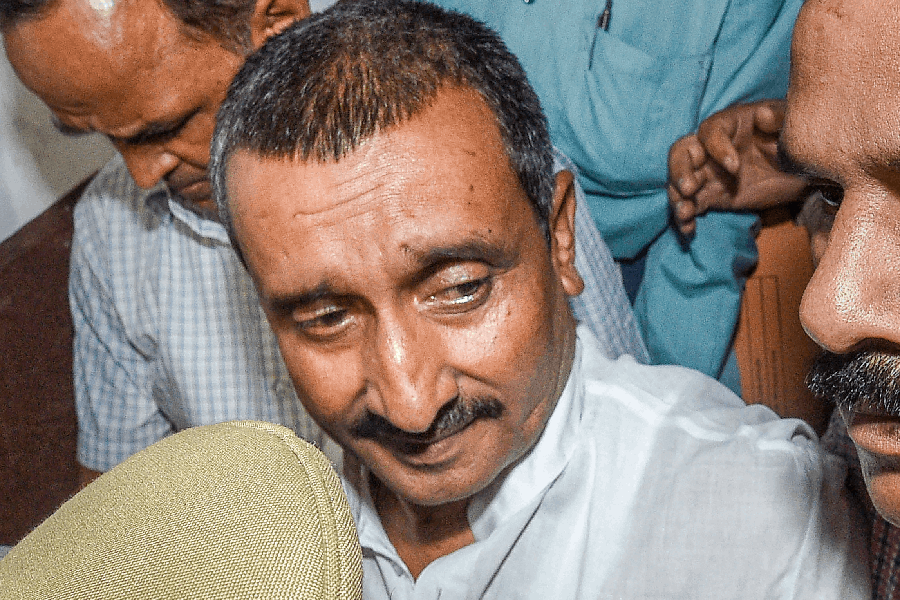Since classical music conferences are rare in the Salt Lake-New Town region, nine music enthusiasts of Uttara Housing Complex - Dwitiya have come together to establish the Uttara Newtown Cultural Society. Their mission is to organise an annual Indian classical music festival, bringing a city winter tradition to New Town.
The society’s inaugural event at Rabindra Tirtha presented a bouquet of noteworthy performances. The evening commenced with a soulful vocal recital by Maitreyee Roy, accompanied by Soumen Nandy on the tabla and her mother, Chaitali Roy, on the harmonium. From the serene raga Hameer to a delicate Mira bhajan, Roy’s repertoire enchanted the audience.
The mood became lively with a percussion duet by the acclaimed Barman brothers. Their jugalbandi of the shreekhol, played by Gopal Barman, and the tabla, played by Madhu Sudan Barman, showcased intricate rhythms in Jhaaptal. With harmonium accompaniment by Hiranmoy Mitra, the brothers enthralled the audience by narrating rhythmic stories, or ‘tukras,’ both vocally and instrumentally.
The event’s anchor, Subarna Haldar, a student of English at Jadavpur University, expressed her admiration for classical music and introduced the evening’s pinnacle — a sitar recital by Partha Bose, accompanied by Parimal Chakraborty on the tabla. Performing raga Maru Behaag, Bose remarked: “Although it’s evening, I’ve chosen a night-time raga to transport you into a realm of timeless melodies.” His performance flowed from a meditative depth to a light and playful mood, culminating in a Mishra Pilu bandish that evoked a range of emotions.
The event concluded with an announcement from the society’s treasurer, Samik Aich, that this festival would become an annual event, scheduled for the first Saturday of December. He expressed gratitude to the audience from across New Town and beyond for their enthusiastic support, emphasising the group’s commitment to bringing high-quality classical music performances to the community.
Secretary Satyaki Haldar, a gynaecologist and obstetrician, reflected on the evening’s dynamic energy.
Joint secretary Sruti Sadhu, a music teacher, underscored the importance of preserving and promoting Indian classical music. “Music is an inseparable part of Bengali culture. Our goal is to preserve and celebrate this art form and thereby inspire younger generations and foster a sense of community through shared cultural experiences. By hosting these events at accessible venues like Rabindra Tirtha, we ensure that even senior residents can attend,” she said.
Mental health aid
World Suicide Prevention Day was observed at City Centre through a play put up by the Creative Movement Therapy Association of India (CMTAI) east zone. Enacted by members, comprising mental health professionals and trainees in the field, the skit aimed at creating awareness about the importance of self-love and mental health.
The performers put across the turmoil of everyday life, which negatively impacts one’s mental health, through their acts. The narration was done by Malabika Guha, the chapter chair of CMTAI, east zone. The various scenes of the play depicted peer pressure, loneliness, bullying, unhealthy competition, ragging, workplace pressure and its ramifications.
Besides the act, Kaushik Sarkar, the creative head of CMTAI, played the djembe, a drum of West African origin, in the background which created an atmosphere of peace and relaxation.
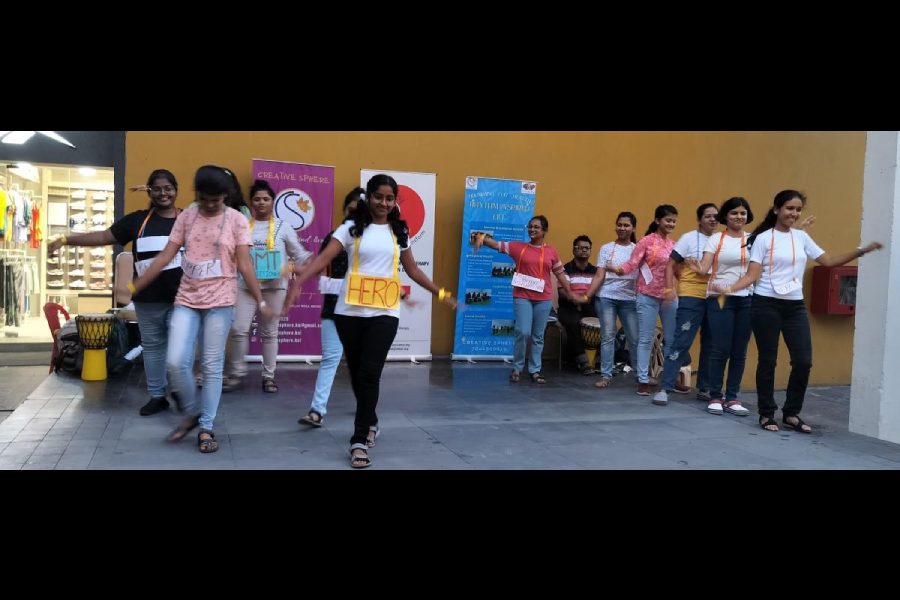
The play at City Centre aimed to prevent suicides
“The theme for World Suicide Prevention Day this time is ‘Creating hope through action’. It is a compelling call to action and a reminder that there is always an alternative to suicide and that we can foster hope through our actions. Our aim was to focus attention on this serious issue, reduce the stigma and raise awareness among people, giving a singular message that suicides are preventable”, said Guha, the organiser who is a neuro-dramatic play and expressive arts therapy practitioner .
Speaking about dance movement therapy, Suvangi Dey, a member of CMTAI and a professor at the Newtown Institute of Nursing Science, explained: “Dance movement therapy is an alternative therapy through body movement. It uses expressive movement and dance as a vehicle through which people can engage in the process of personal integration and growth. This is a psychotherapeutic framework that works with the mind-body connection to use personal movement language and dance for the health and wellness of an individual’s physical, emotional, cognitive, social and behavioural aspects.”
“I loved the performance; it is a noble initiative how members of this group took out time to bring forth such an important issue and create awareness among us,” said Anupriya Mukherjee, a 16-year-old student in the audience.
The event concluded with the mental health professionals emphasising the importance of self-love. They mentioned some of the coping mechanisms that one may use in the face of stress and/ or trauma to help manage painful or difficult emotions, like journaling, mandala art, exercise and meditation.
They also taught some creative movements and relaxation techniques, which the people in the audience eagerly imitated and learnt. The event came to an end with everyone shouting out: “Love you zindagi!”

